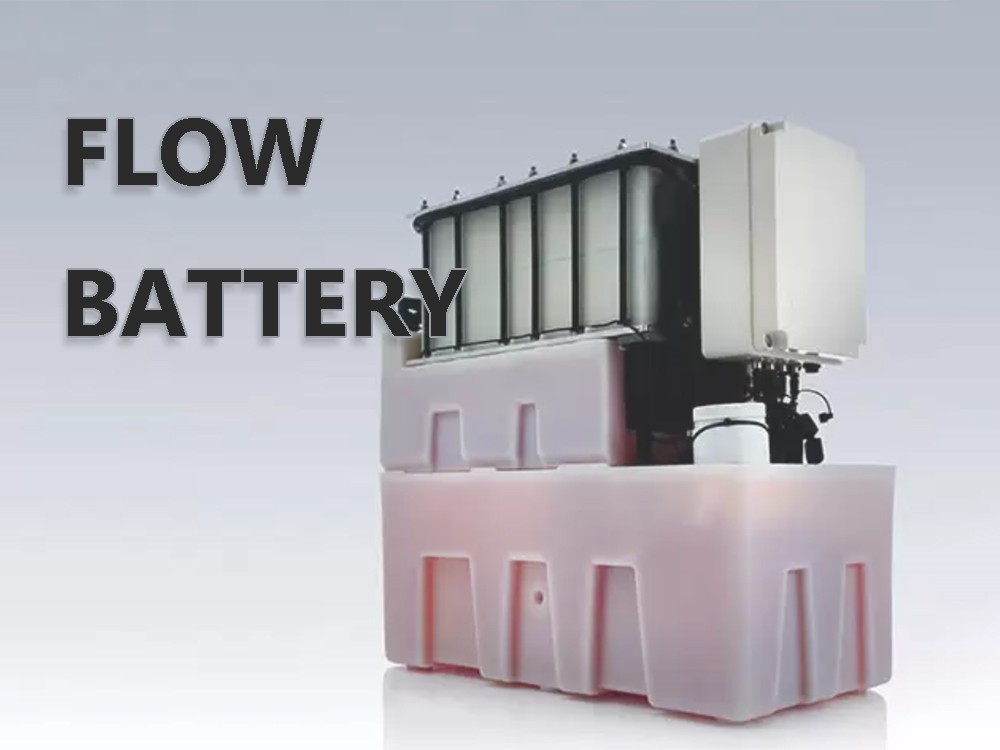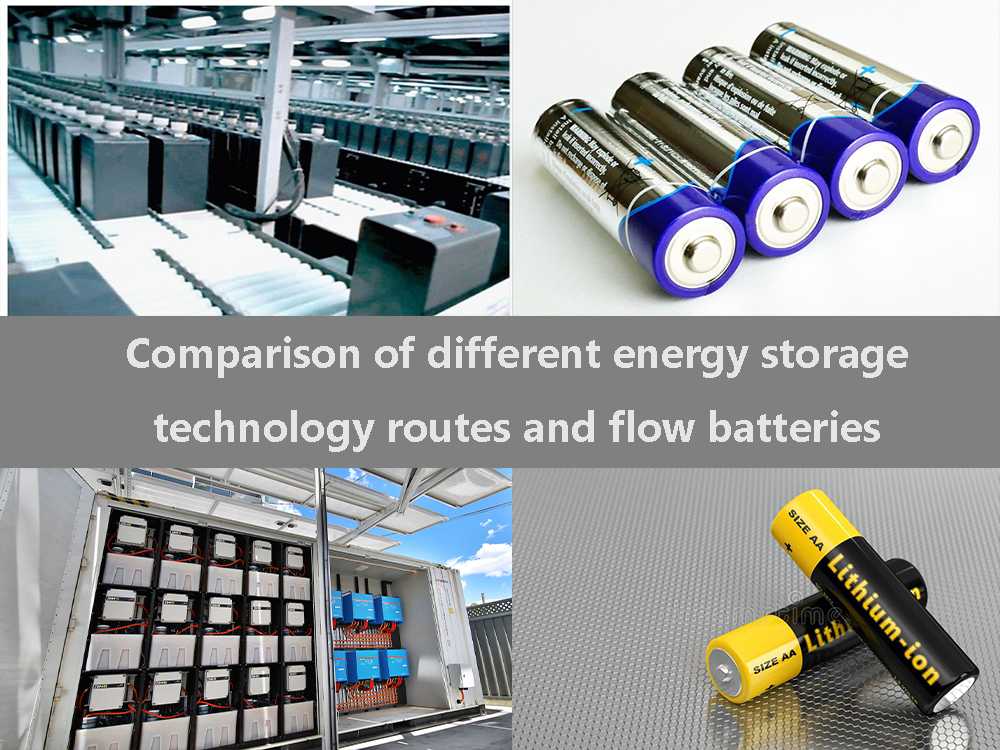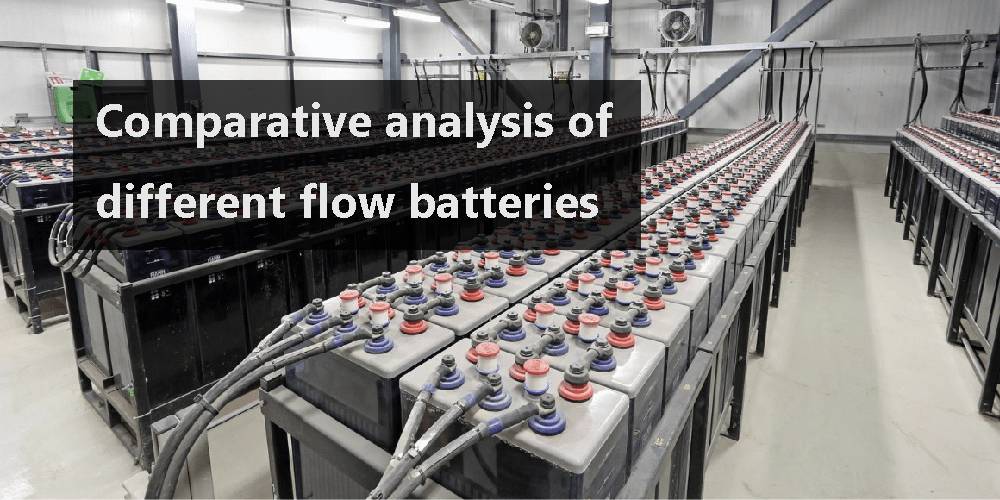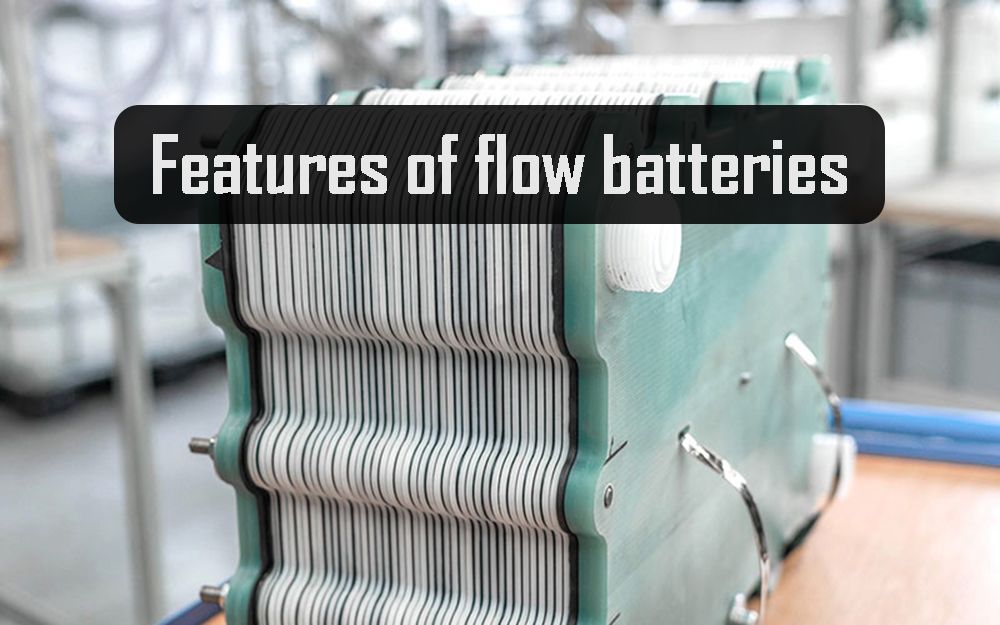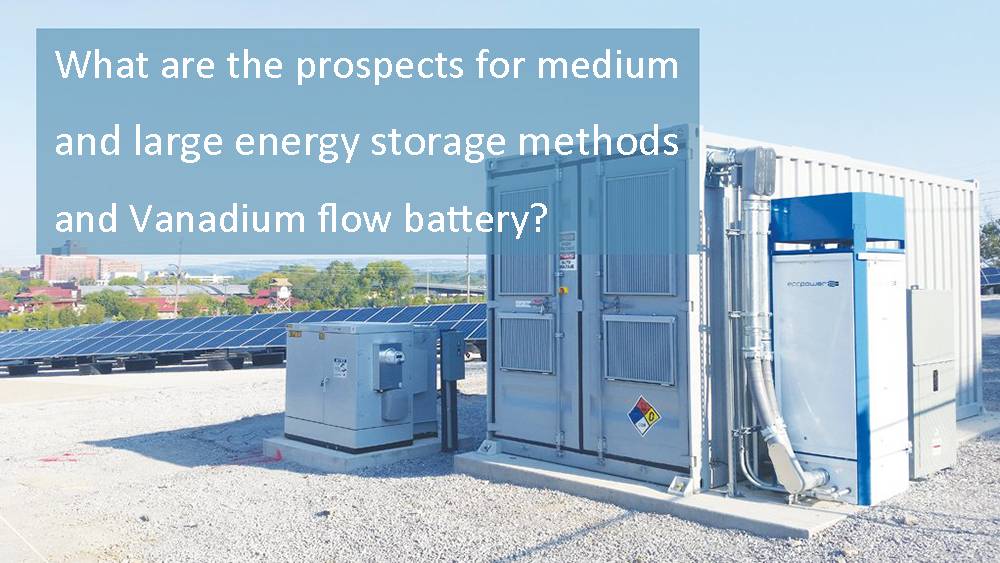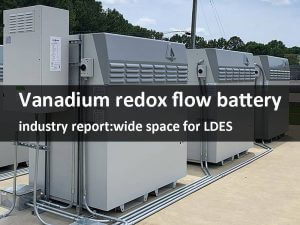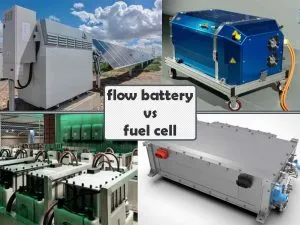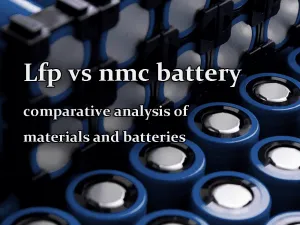Introduction guide of flow battery - features, comparison and FAQs

Table of Contents
At present, China’s largest flow battery demonstration project has achieved 100 MW/400 MWh. At present, there are three technical routes for flow batteries to be better:
- (1) Vanadium flow battery
- (2) Iron-chromium flow battery
- (3) Zinc-bromine flow battery
In this article, I will compare the characteristics of the major flow batteries, and their advantages and disadvantages,also talk about FAQs of flow batteries.
Comparison of different energy storage technology routes and flow batteries
Performance
A comparison was made with lead-carbon batteries, sodium-sulfur batteries and lithium batteries from the aspects of cycle times, energy density, power, self-discharge and charge-discharge. At present, the biggest advantage of flow batteries is the number of cycles, which can reach 15,000-20,000 cycles, far ahead of other energy storage technologies.
However, flow batteries also have very obvious shortcomings, that is, the self-discharge rate is relatively high, resulting in relatively low efficiency. Generally, the efficiency of vanadium flow batteries is about 70%.
In terms of energy density, since the flow battery is limited by the composition of the electrolyte, the energy density is relatively low. For a large-scale energy storage project with a 100 MW/400 MWh flow battery, using the same site, if it is replaced by a lithium battery, it can reach 800-1,000 MWh.
Cost and Safety
From the perspective of construction cost, commercialization, safety battery recycling and electromotive cost, it can be seen that the current kWh cost of flow batteries is relatively advantageous. The kWh cost of batteries (full life cycle) is now below 0.3 RMB/kWh.
In terms of safety, flow batteries will not catch fire and explode like lithium batteries. On another level, flow batteries are not so safe, especially the most widely used all-vanadium flow batteries.
Its electrolyte is formed by dissolving vanadium pentoxide in dilute sulfuric acid. This electrolyte is toxic and highly corrosive, and there is a risk of leakage during operation. relatively large damage.
Commercialization
At the commercialization level, the current all-vanadium redox flow battery has just entered the threshold of commercialization. The iron-chromium liquid flow and the zinc-bromine liquid flow have not yet reached the commercialization level of the all-vanadium liquid flow, and further efforts are needed.
In the field of battery recycling, the electrolyte of all-vanadium liquid flow can achieve better recycling, which is better than other technical routes, such as lithium batteries, sodium-sulfur batteries and lead-carbon batteries.
Although the electrolyte of lead-carbon batteries cannot be recycled, more than 95% of the lead resources in lead-carbon batteries can be recycled, and its recycling performance is relatively good.
Comparison of technical parameters of flow batteries
The main thing is the comparison of voltage levels. The voltage level of the vanadium flow battery is 1.26 volts, the voltage level of the Zinc-bromine flow battery is 1.85 volts, and the voltage level of the Iron-chromium flow battery is 1.18 volts. What effect does the voltage have?
In principle, the higher the open circuit voltage level when fully charged, means the higher the energy density of the battery, just like the voltage level of the common lithium iron phosphate battery can be 3.2 volts, and the ternary lithium battery as high voltage battery can be 3.7- 4.2 Volts, the energy density of the ternary lithium battery is higher than that of the iron lithium battery.
Similarly, the open circuit voltage of the flow battery is relatively low, so the energy density is relatively low.
Comparative analysis of different flow batteries
The electrolyte of the flow battery is an aqueous solution, and its reaction site is separated from the storage site of the active material. The stack is a stack, and the liquid storage tank is a liquid storage tank. security is very high.
All flow batteries, including vanadium flow battery, iron-chromium, zinc-bromine, can be charged and discharged 100%. Even if the depth of charge and discharge continues to reach 100%, it will not cause any damage to the battery, but will cause damage to the battery. Longevity is beneficial.
This one is completely impossible for lithium batteries to achieve. Overcharging or overdischarging of lithium batteries will cause irreversible damage to it, causing internal short circuits, and even fire and explosion.
The capacity and power of the flow battery can be configured independently, which is also the most attractive part of the flow battery. For the flow battery, the number of its stacks determines the output power of the entire system and its electrolyte dosage. Determines the capacity of the entire flow battery system.
For example, for a 1 MWh project, the capacity of the flow battery can be 0.5 MWh, 1 MWh, 2 MWh, and of course it can be configured to 10 MWh, which is more flexible.
Another point is that when all flow batteries are running, the electrolyte circulating inside the system can take away the internal heat, which is incomparable with lithium batteries. The heat dissipation of lithium batteries requires a special cooling system. For flow batteries In other words, this piece is not so necessary.
Also, the electrode material of the flow battery and its membrane material are organic, similar to plastic, especially for Zinc-bromine flow battery, its membrane is cheaper and is a microporous material, lower cost.
The last point is that the degree of modularity of flow batteries is relatively high, and the degree of freedom of project site selection is relatively large. These are the common characteristics of all flow batteries.
Features of flow battery
All flow batteries, including vanadium flow batteries, iron-chromium, zinc-bromine, can be charged and discharged 100%. The capacity and power of flow batteries can be independently configured, which is also the most attractive part of flow batteries.
For a flow battery, the number of its stacks determines the output power of the entire system, and the amount of electrolyte used in the flow battery determines the capacity of the entire flow battery system.
The customization of flow batteries is relatively easy, and it is easy to expand the capacity.
The last point is that the degree of modularity of flow batteries is relatively high, and the degree of freedom of project site selection is relatively large. These are the common characteristics of all flow batteries. In terms of modularity, everyone is similar, and they can do modular design, and the power and capacity are relatively independent.
Advantages and disadvantages of various flow batteries
Vanadium flow battery
Pros:
- Good heat transfer effect, no burning and no explosion, high safety
- The consistency between single cells is better
- Deep charge and deep discharge have no adverse effect on battery performance
- long life
Cons
- The operation of vanadium flow battery is generally more stringent than that of lithium battery.
- More expensive than Iron-chromium flow battery
- Divalent vanadium is easily oxidized, resulting in system capacity degradation
It is currently the largest battery technology in China’s demonstration projects, here are top 10 vanadium battery companies in China.
Iron-chromium flow battery
pros:
- Long life and high safety
- Compared with vanadium flow battery, the material is less toxic and corrosive, and can be regenerated
- Iron-chromium flow battery is more adaptable
- The resources are particularly abundant and the cost is relatively low
- Strong ability to increase production and relatively stable prices
Cons
- There is a problem of cross-contamination in the electrolyte
Zinc-bromine flow battery
Pros
- The material is a microporous material, and the cost is lower.
- High performance, low cost, large capacity
- Free of precious metals and recyclable
Cons
- The cycle times of Zinc-bromine flow battery is lower than that of vanadium flow battery and Iron-chromium flow battery
- Bromine is a volatile solution, corrosive and penetrating
FAQs
How to compare Iron-chromium flow battery and Vanadium flow battery
The comparison between the Iron-chromium flow battery and the vanadium flow battery mainly depends on the power of the single cell stack. At present, the all-vanadium has achieved 200-400 kilowatts, while the Iron-chromium flow battery is less than 100 kilowatts, and the technical maturity is quite poor.
Looking at the safety during operation, the Iron-chromium flow battery has the problem of "hydrogen evolution" of the negative electrode that is difficult to solve, while the all-vanadium does not. On the whole, the technical advantages of all-vanadium are greater.
Compared with lithium batteries, vanadium flow battery lags behind, mainly in three points:
- (1) For projects of the same power/capacity scale, the initial investment of all-vanadium is twice that of lithium batteries;
- (2) The electricity-to-electricity efficiency of all-vanadium is about 20% lower than that of lithium batteries;
- (3) The operation and maintenance of all-vanadium is more complicated, more sensitive to temperature, and difficult to operate and maintain.
What are the prospects for medium and large energy storage methods and vanadium flow battery
The policy prohibits ternary lithium battery instead of all lithium batteries. In fact, it is to support and encourage lithium iron phosphate batteries to participate in power system applications.
Due to the shortcomings of flow batteries in terms of cost, efficiency, and industrial maturity, the largest increase in medium and large-scale energy storage projects in the next 4-5 years will still be the technical route of lithium iron phosphate batteries, rather than flow batteries.
How about the battery material system of vanadium flow battery and Iron-chromium flow battery
What is the development prospect of sulfur-based flow batteries and zinc-bromine batteries
Sulfur-based flow batteries are currently in the laboratory stage and are still far from application. Zinc-bromine flow battery has almost been eliminated from the market due to its lower efficiency (lower than vanadium flow) and the disadvantage of technical parameters.


